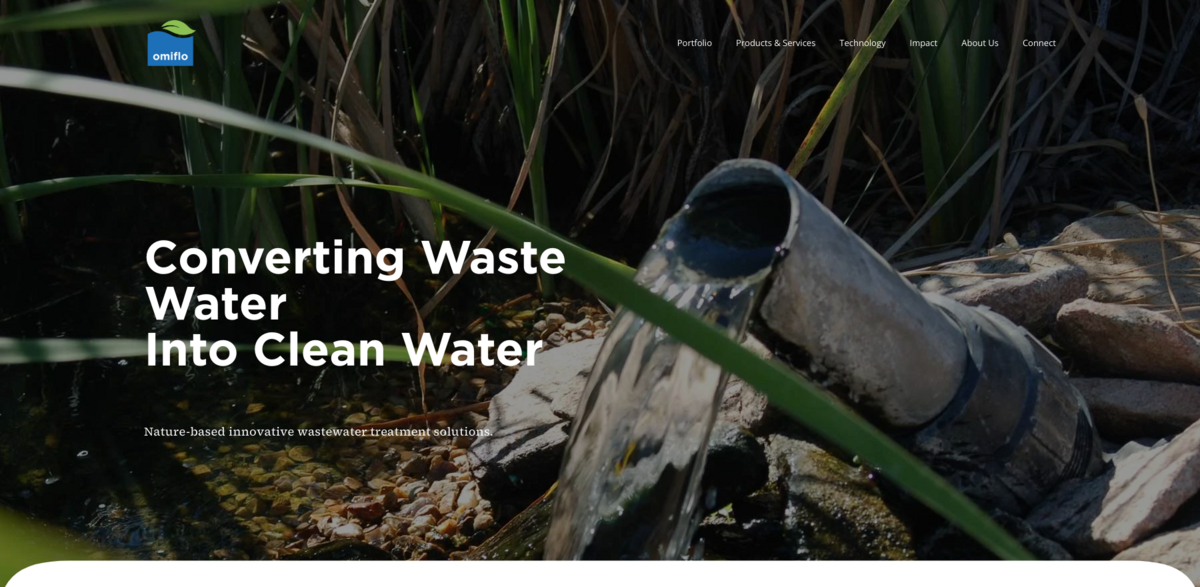What is the Omiflo Project?
Omiflo is a Kenyan-based biotechnology company, founded in 2019, that’s shaking up the world of wastewater treatment. Their innovative approach? Nature-based, plant-powered biotechnology systems that convert wastewater into clean, reusable water—without relying on energy or chemicals. Imagine a system that combines phytoremediation and hydroponics principles to recycle wastewater more effectively and sustainably than traditional methods. It’s compact, self-sustaining, and totally odor-free, with no moving parts to worry about. Basically, Omiflo delivers the power of electro-mechanical treatment systems but without the usual headaches of high costs or technical expertise. Pretty impressive, right?
Main Benefits of Omiflo’s Wastewater Treatment
Here’s a quick snapshot of what Omiflo has achieved so far:
- 242,360,000 liters per year of sewage treated
- 68,985,000 liters per year of reclaimed water produced
- 50,589 kilograms per year of BOD (Biochemical Oxygen Demand) removed
- 83.17 tons per year of carbon sequestered
These numbers aren’t just stats—they represent cleaner environments, healthier communities, and a big step toward sustainable water management.
How Omiflo Works
The magic lies in Omiflo’s unique system that blends natural plant-based biotechnology with smart design. By harnessing phytoremediation and hydroponics, the system treats wastewater without the need for energy or chemicals. It’s a smaller footprint compared to open ponds or constructed wetlands, making it ideal for urban and rural settings alike. Plus, it’s robust and low-maintenance—no moving parts means fewer breakdowns and less hassle. This approach turns wastewater from a costly problem into a valuable resource, ready for reuse in irrigation, toilet flushing, and other non-potable applications.
Why Choose Omiflo?
Omiflo isn’t just about technology; it’s about customization and community impact. They design, install, manage, and maintain wastewater treatment systems tailored to specific client and community needs. Whether it’s a turnkey project—where they build and hand over a fully operational system—or a build-and-operate model suited to different financial situations, Omiflo adapts. With over 30 successful projects across Kenya and ongoing work in Uganda and Zambia, their systems treat more than 250,000 liters of sewage daily. The result? Reliable, recycled water that supports sustainable living.
Sustainability at the Core
At its heart, Omiflo’s vision is about more than just water treatment—it’s about transforming how communities across Africa access and value water. The mission? To flip the script on wastewater, turning it from a costly, polluting nuisance into an economic, social, and environmental asset. Their solutions create beautiful, functional environments while helping to fight climate change. It’s a bold, forward-thinking approach that’s making waves across the continent.
Project Impact and Sustainable Development Goals (SDGs)
- SDG 6: Clean Water and Sanitation – Ensuring availability and sustainable management of water
- SDG 11: Sustainable Cities and Communities – Making cities inclusive, safe, resilient, and sustainable
- SDG 13: Climate Action – Taking urgent action to combat climate change and its impacts
- SDG 15: Life on Land – Protecting, restoring, and promoting sustainable use of terrestrial ecosystems
- SDG 17: Partnerships for the Goals – Strengthening global partnerships for sustainable development
Recognition and Team Behind Omiflo
Omiflo’s work hasn’t gone unnoticed. The company has earned accolades and support from prestigious organizations like HIF Solve, Prince Albert II Foundation, Good Energies, and the U.S. African Development Foundation, among others. Their projects have been recognized with awards such as the No Waste Challenge, Oceans Innovative Prize 2, and the Living Forest Prize. Behind this success is a dedicated team of architects, project managers, landscapers, civil and biotech engineers, and biologists—working directly or through partnerships—to bring these innovative solutions to life. Together, they’re driving a future where wastewater is no longer waste but a resource for thriving communities.





















